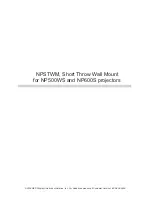
3-76
OPERATION
ORBAN MODEL 8600S
Digital Output
The AES1 digital output is normally used to drive the digital transmitter. However,
you can use any output (
A
NALOG
L/R,
AES1
, and
AES2
). The digital outputs have the
following controls, located in the
I
NPUT
/
O
UTPUT
screen.
Out Level
(“Digital Output 1” and “Digital Output 2”) sets the digital-channel out-
put level with respect to digital full scale. It is normally set at 0 dBFS, which uses all
the headroom available in the HD transmission channel. To match the loudness of
the analog and digital channels at the receiver, use the
L
IMITER
D
RIVE
control. This
minimizes the amount of peak limiting necessary to match the loudness of the ana-
log and digital channels at the receiver.
When the BS.1770 Safety Limiter is active, it changes the way the
O
UTPUT
L
EVEL
con-
trol operates. See step 12 on page 2-35.
Samp Rate
(“Sample Rate”) sets the output sample rate of the digital-channel out-
put to 32, 44.1, 48, 88.2, or 96 kHz.
The 8600S’s fundamental sample rate is always 64 kHz, but the internal
sample rate converter sets the rate at the 8600S’s digital output. This ad-
justment allows you to ensure compatibility with downstream equipment
requiring a fixed sample rate.
A 32 kHz sample rate cannot represent frequencies higher than approxi-
mately 15 kHz. Therefore, setting the sample rate to 32 kHz automati-
cally forces the bandwidth to 15 kHz, regardless of the setting of the
HD
B
ANDWIDTH
control
.
Word Leng
(“ Word Length”) sets the word length (in bits) emitted from the digi-
tal-channel output.
The largest valid word length in the 8600S is 24 bits. The 8600S can also
truncate its output word length to 20, 18, 16, or 14 bits. The 8600S can
also add dither, which we recommend.
Dither
turns on or off addition of “high-pass” dither before any truncation of the
output wordlength.
The amount of dither automatically tracks the setting of the
W
ORD
L
ENGTH
control. This first-order noise shaped dither adds considerably less
noise in the midrange than does white PDF dither. However, unlike ex-
treme noise shaping, first-order noise shaped dither adds a maximum of
3 dB of excess total noise power when compared to white PDF dither. It is
thus a good compromise between white PDF dither and extreme noise
shaping.
In many cases, the source material has already been correctly dithered so
you will not need to add dither and can set this control to
O
UT
. However,
particularly if you use the Noise Reduction feature, the processing can
sometimes attenuate input dither to a point where it is insufficient to
dither the output correctly. In this case, you should add dither within the
8600S by turning this control on.
Sync
determines if the sample rate appearing at the digital-channel output is
synced to the 8600S’s internal clock, to an AES3 signal appearing at the 8600S’s digi-
Summary of Contents for OPTIMOD-FM 8600S
Page 1: ...Operating Manual OPTIMOD FM 8600S Digital Audio Processor Version 2 1 Software ...
Page 7: ...Operating Manual OPTIMOD FM 8600S Digital Audio Processor Version 2 1 Software ...
Page 56: ......
Page 166: ......
Page 254: ...3 88 OPERATION ORBAN MODEL 8600S ...
Page 326: ......
Page 328: ...6 28 TECHNICAL DATA ORBAN MODEL 8600S CONTROL BOARD PARTS LOCATOR ...
Page 352: ...6 52 TECHNICAL DATA ORBAN MODEL 8600S ...
















































